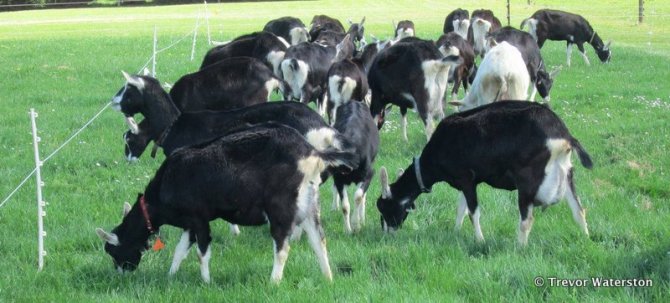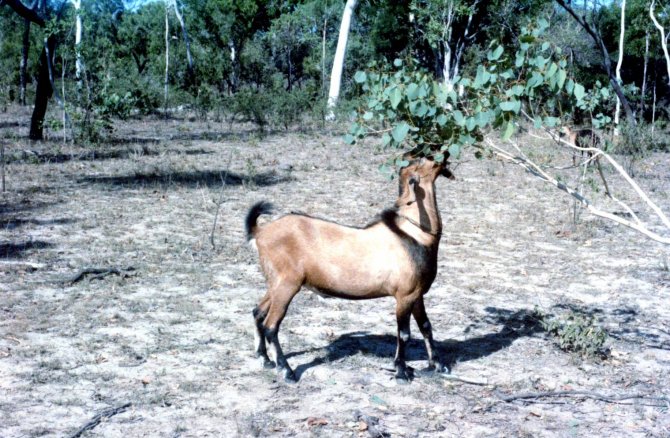Problem: Continually high worm burdens in your grazing animals resulting in the need to drench more frequently.
Solution: Managing the frequency and intensity with which livestock graze pasture reduces the number of infective larvae ingested from the pasture each day.
Benefit: Effective grazing management will reduce the exposure of vulnerable sheep to larvae on pasture and the need for chemical (drench) intervention and at the same time provide nutrition to allow sheep to better deal with parasites.
Grazing for worm control entails any strategy to provide 'low worm-risk' pastures for the most susceptible sheep.
The aim of grazing management is to have vulnerable sheep exposed to fewer larvae on pasture.
Grazing management for worm control entails a range of strategies:
What are the key components and concepts of grazing management strategies?
There are a number of approaches to rotational grazing that differ in the time used for graze and rest periods.
The graze period
This is the time livestock spend grazing a paddock. Controlling the amount of time a paddock is grazed is just as important as leaving adequate rest periods between grazing.
The rest period
The time in a rotational grazing system when the stock are not in the paddock to ‘break’ the worm life cycle. Most sheep parasites complete their life cycle only in sheep with a few exceptions. Thus, grazing with cattle represents a period of rest from sheep grazing, during which the number of infective larvae on pasture declines because larvae continue to die.
The auto-infection period
This is the time between eggs being deposited on pasture (in the sheep’s dung) and when the larvae that have developed from those eggs appear on pasture ready to re-infect sheep. This is 4–10 days; the shorter period when temperature and moisture conditions are ideal for the particular worm species. Grazing animals on a paddock for a time shorter than the auto-infection period allows them to continue through further paddocks, picking up infection at a slower rate from larvae already on the pasture.
Knowing where the worm larvae are found on the pasture and what influences their distribution and survival on pasture is important in grazing management.
Effect of pasture species on worm larvae distribution and survival
Different pasture species can influence the sward microclimate or possess a sward structure that is unsuitable for the parasites and therefore affect the larval population and number of L3 larvae ingested by grazing livestock.
Research shows that the differences between herbage species alter larval density in various height strata. Scales et al (1994) and Moss and Vlassof (1993) observed fewer larvae on chicory and lucerne than on various grasses. Niezen et al (1993) reported lower faecal egg counts from lambs grazing Yorkshire fog or ryegrass compared to common bent or tall fescue.
It has been suggested that greater numbers of larvae can overwinter on forage species with heavy, dense growth characteristics compared to those with a more open type of growth.
In addition, pasture composition can also affect the movement of infective larvae and the use of alternative forages can offer further means of parasite control. For example, chicory has been reported to lower faecal egg counts in lambs and improve weight gains and legumes such as red clover, have been shown to affect larval migration, thereby lowering infection rates.
Effective grazing management reduces the exposure of goats to worms.
There are four basics:

Alternating grazing between cattle and goats is an effective means of reducing worm infection because most worms are host-specific. That is, most worms are only able to successfully infect either goats or cattle, not both, and ingestion by the non-preferred host results in death of the larvae. Sheep and alpacas should not be used as they share common parasites with goats.
Notable exceptions are the ability of barber’s pole worm and stomach hairworm (Trichostrongylus axei) to successfully reproduce within goats and young cattle (i.e. pre-weaning). Using dry adult cattle for alternate grazing is preferable, but large benefits still arise from using cows and calves and this should not prevent their use for this purpose.
Goats can also be severely infected by brown stomach worms (Ostertagia ostertagi) from cattle, unlike the situation with sheep and lambs.
Grazing with cattle represents a period of rest for the paddock from goat grazing, during which the number of infective larvae on pasture declines because larvae continue to die. The same periods of cattle grazing, as described below for grazing management rest periods (40–80 days), are required to gain sufficient benefit for worm control in goats but will also depend on the type of worm, the temperature and humidity, and the stocking rate of cattle.
Horses are ideal for alternating grazing with goats as worms are not shared between goats and horses. If numbers of goats are small and horses are used on the farm, then this may be a useful tool.
The value of rotational grazing management as an aid for worm control is based on:
There are a number of approaches to rotational grazing that differ in the time used for graze and rest periods. Faster growing pasture will require a shorter rest period between grazing events, while slower growing pastures require a longer rest period; the longer the rest period, the longer the graze period.
Choosing the period of grazing and rest is a balance between worm control and pasture utilization. Information on grazing management is available at:
Rotational grazing has been demonstrated to reduce barber’s pole worm infection in summer rainfall regions with goats.
The benefit of rotational grazing for worm control is greatest for barber’s pole worm because development from egg to infective larvae cannot be delayed and larvae do not remain in the dung pellet, but quickly emerge onto pasture. There is also benefit for control of scour worms, but the survival of these worms on pasture is prolonged because they can delay development and remain in the faecal pellet. In winter rainfall regions there can be a delay of several months between eggs being deposited in the dung and the appearance of scour worm larvae on the pasture.
Control of scour worms in winter rainfall regions is greatly assisted by the integration of effective drenching followed by brief periods of intensive grazing (see 'Smart Grazing'). This approach also has benefit in the summer rainfall region.
Goats evolved as browsers and should be encouraged to browse as much as possible. If a goat is eating with its head up it is not ingesting worm larvae as they can’t move that high.
Most worm larvae are in the first 5 cm off the ground arriving there by random wriggling on moisture provided by dew. Very few larvae are on grass stems that are above 10 cm in height. Above 15 cm there is almost no worm larvae.
Because goats are less resistant to worms than sheep, higher stocking rates, especially when it exceeds the carrying capacity of the pasture, are likely to increase worm infection and compromise welfare.

In lengthy periods of cold, heat or dry, worm eggs cannot develop to infective larvae. In these periods, pastures to be prepared as low worm-risk paddocks, can be grazed by goats regardless of their worm burden. The conditions and time required for this strategy will depend on the worm species (see 'Factors contributing to paddock contamination with worms').
This is a particularly successful strategy in the northern tablelands of NSW where a 4-month cold period is exploited. This only requires the paddocks to be actively managed (through spelling, grazing with cattle or ‘Smart Grazing’) in the 2 months prior to winter, so as to give a total of 6 months in which existing larvae are dying before being used as a low worm-risk spring lambing paddock.
In Mediterranean-climate areas with hot, dry summer months, the paddocks can be almost completely worm-free by the autumn break—particularly in areas of South Australia and Western Australia.
To find out how you can use grazing management to improve worm control on your property, follow this link to the WormBoss Worm Control Program for your region.